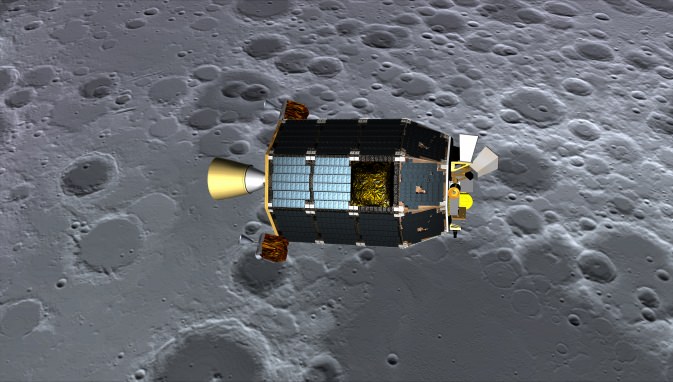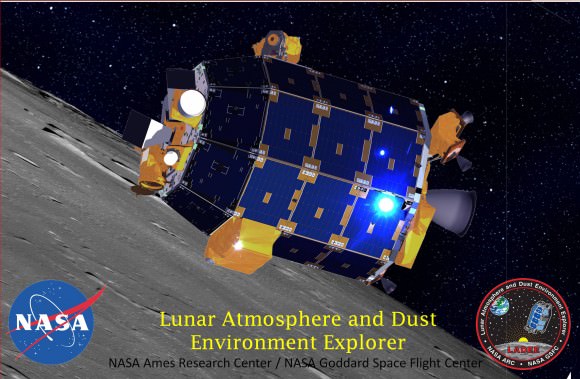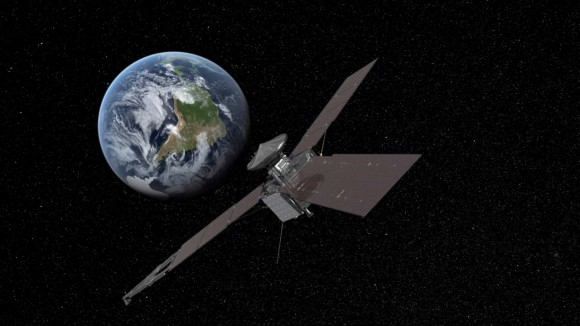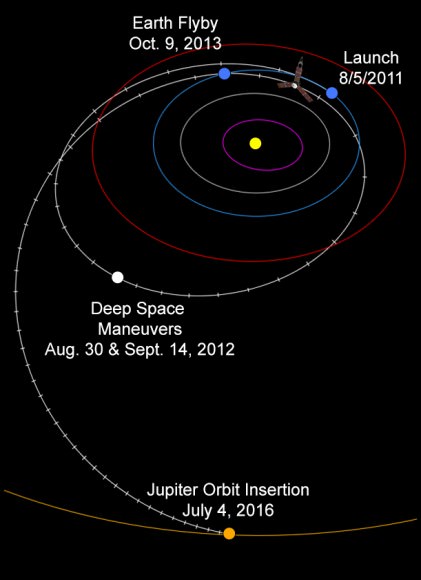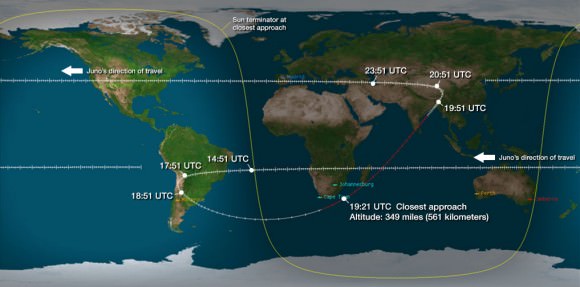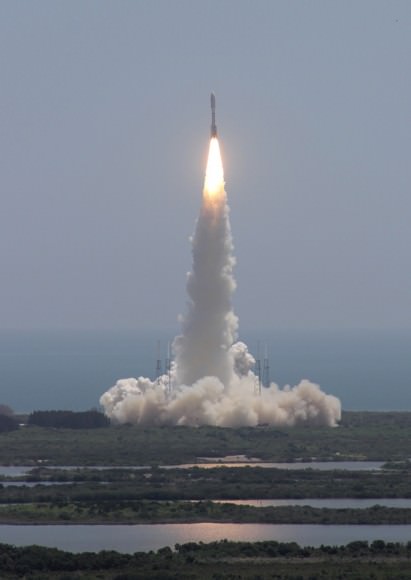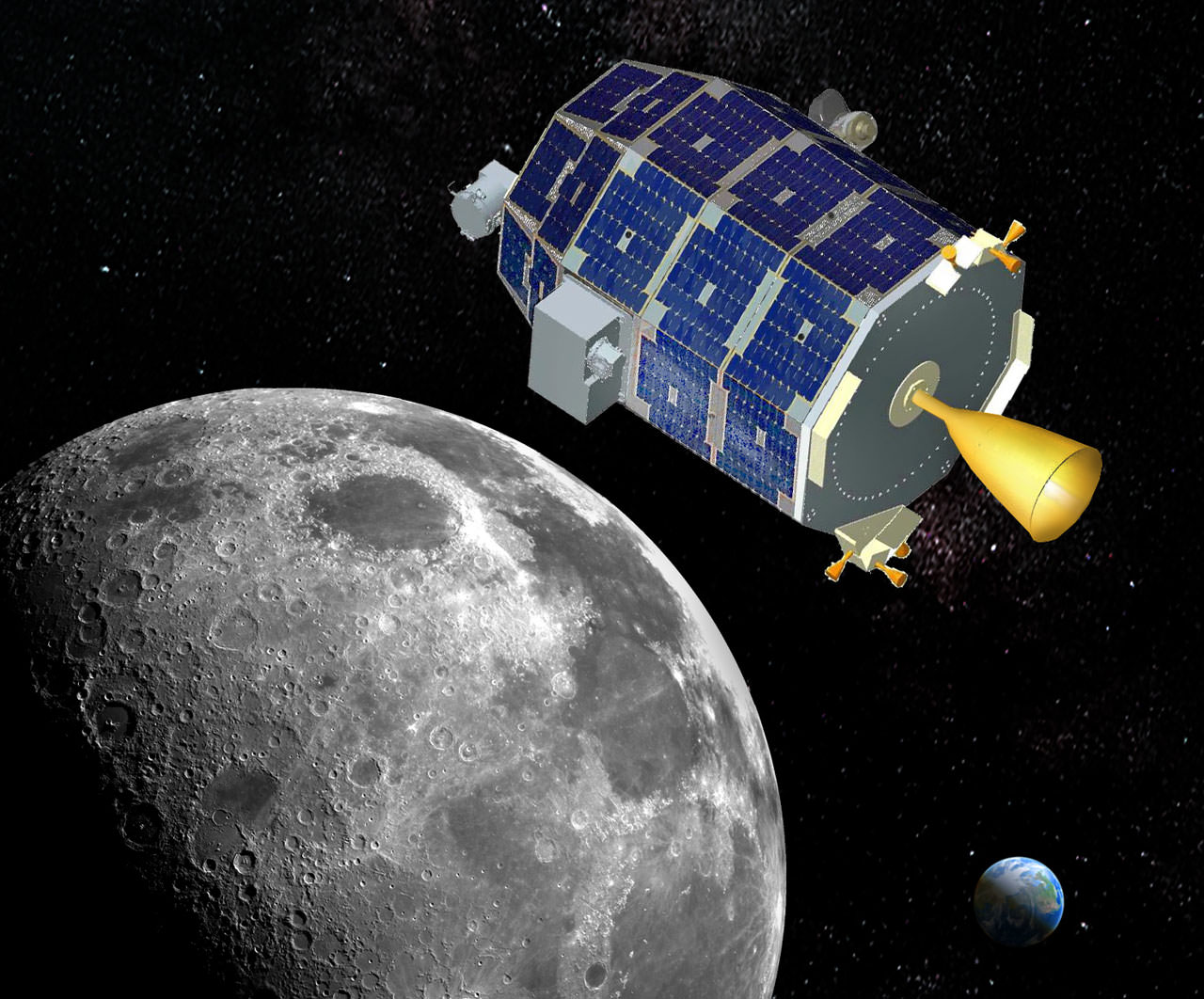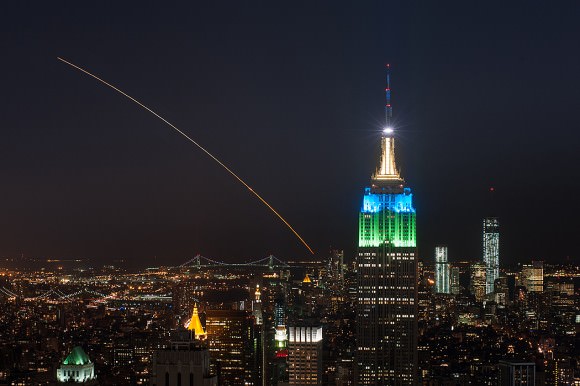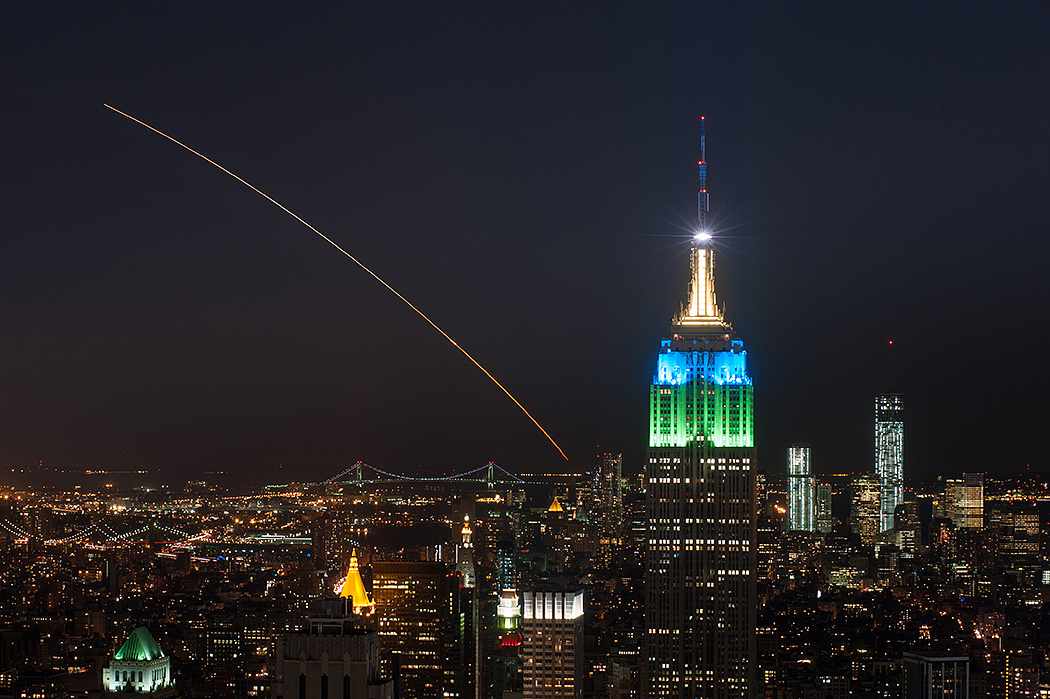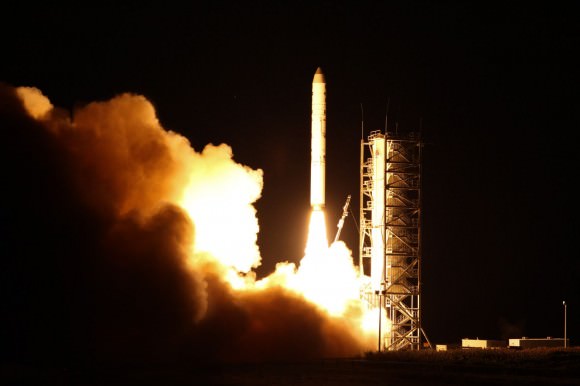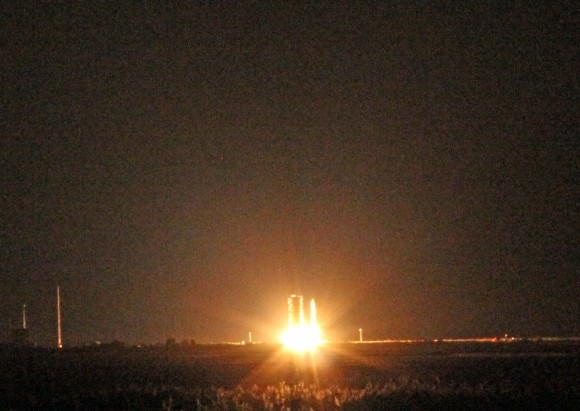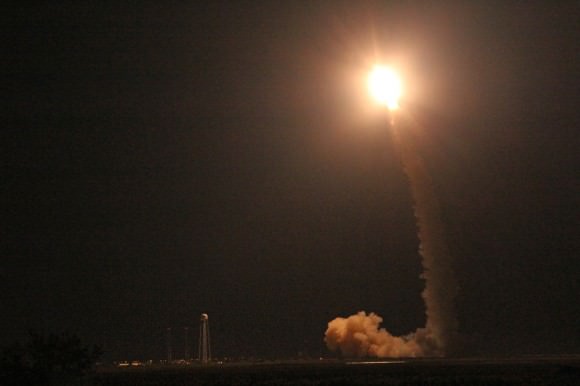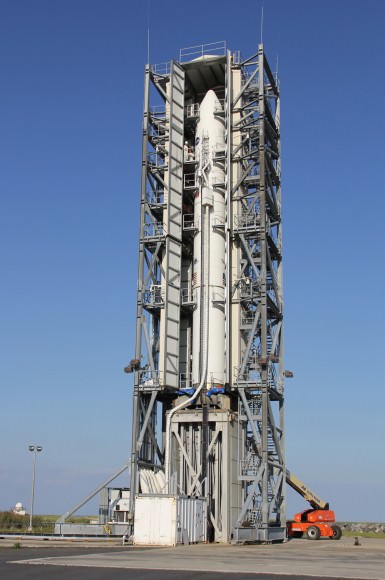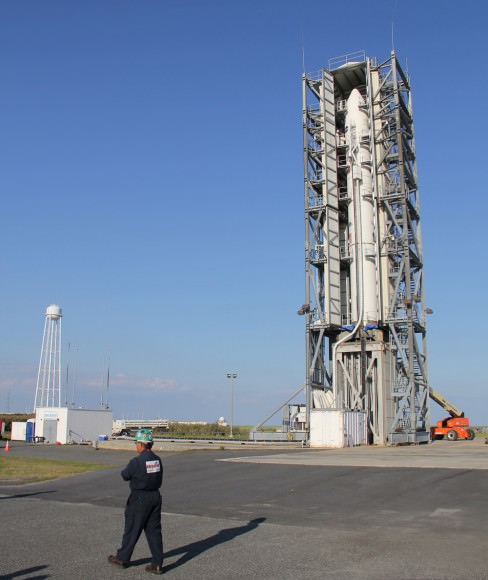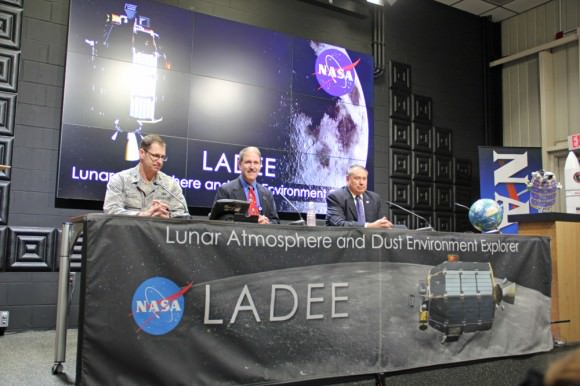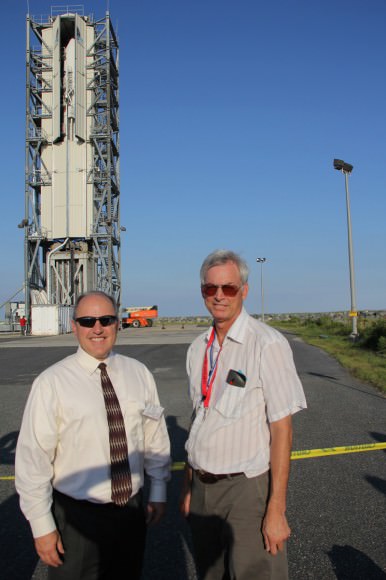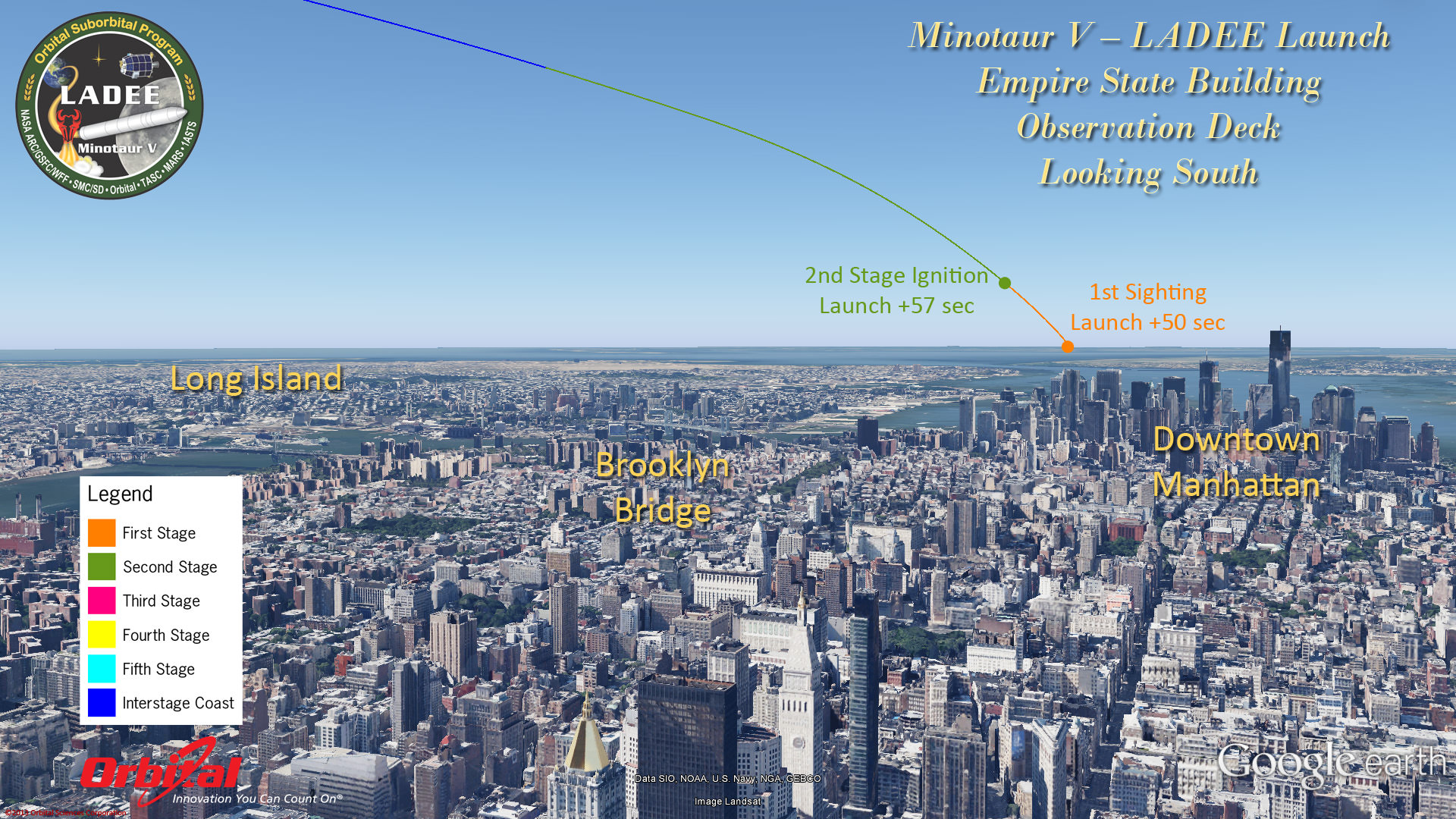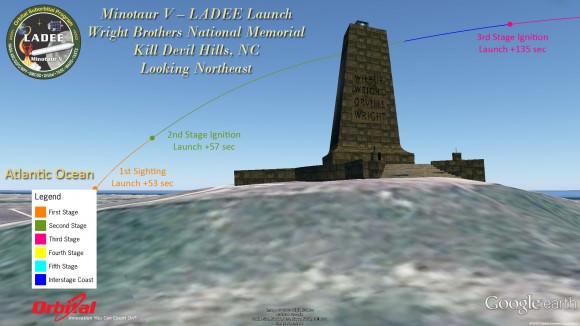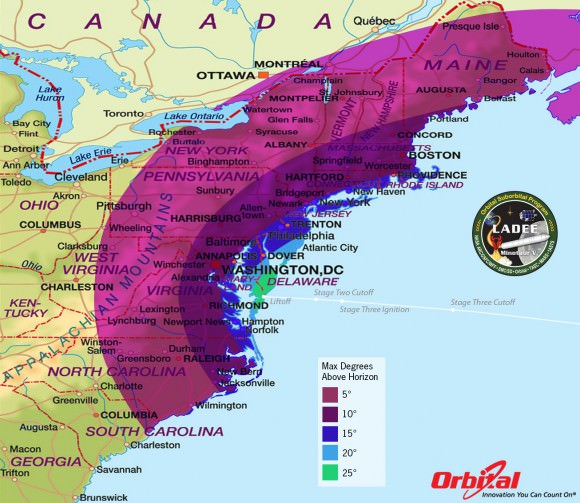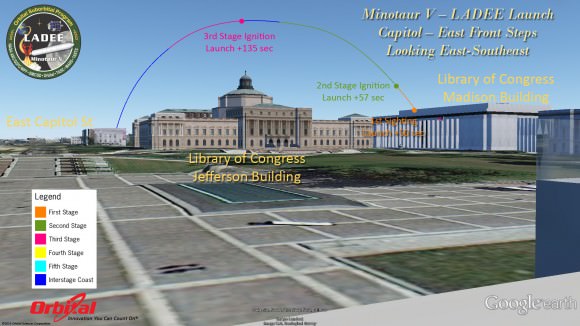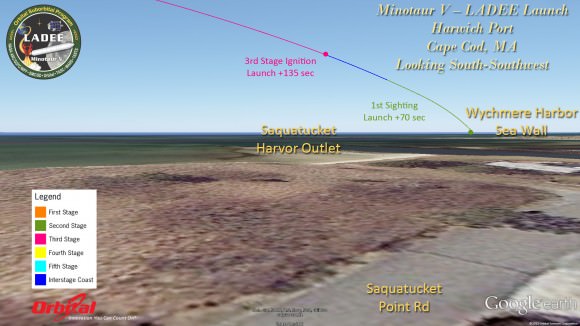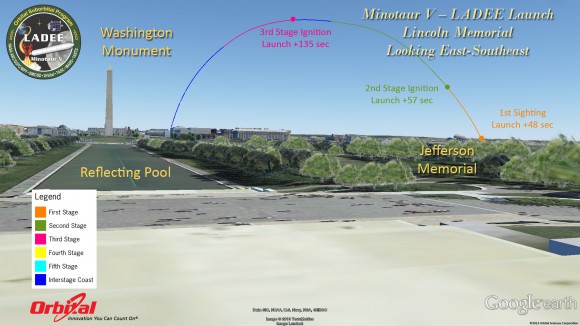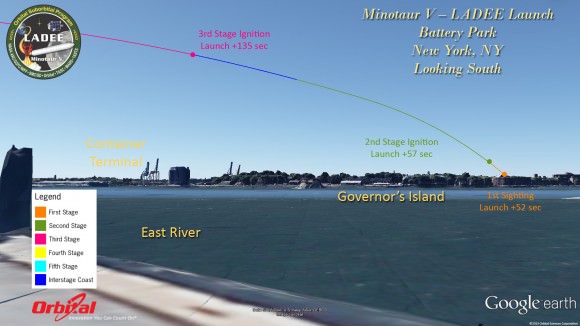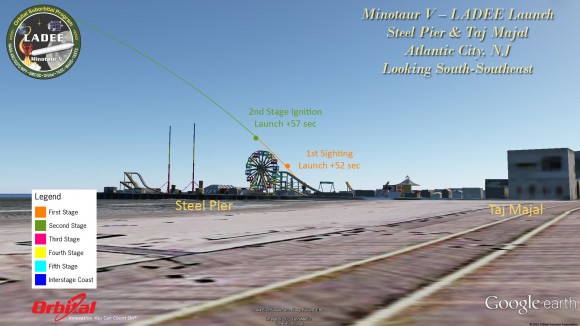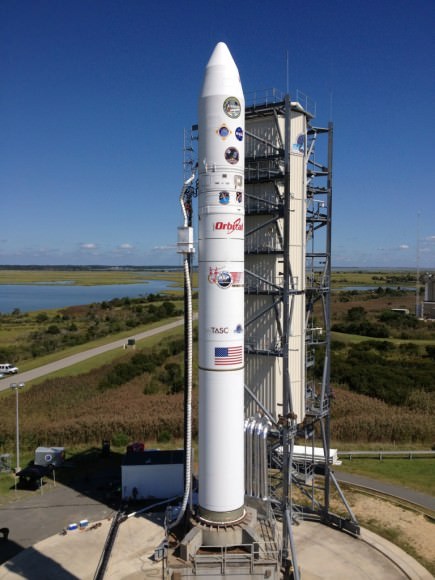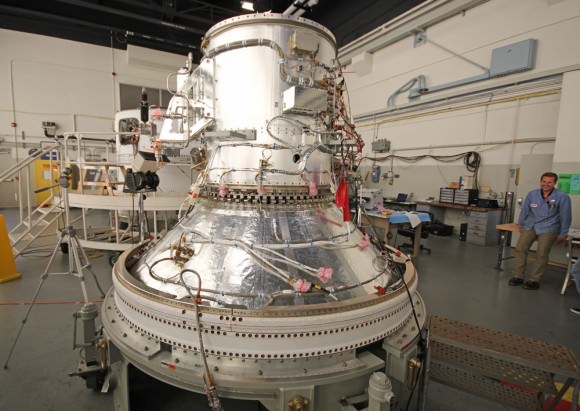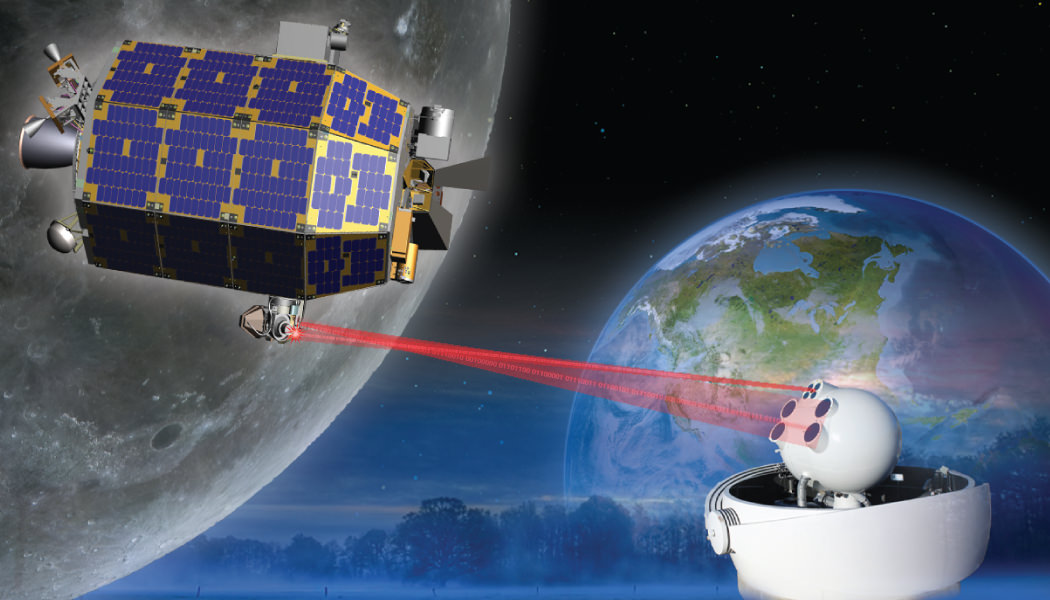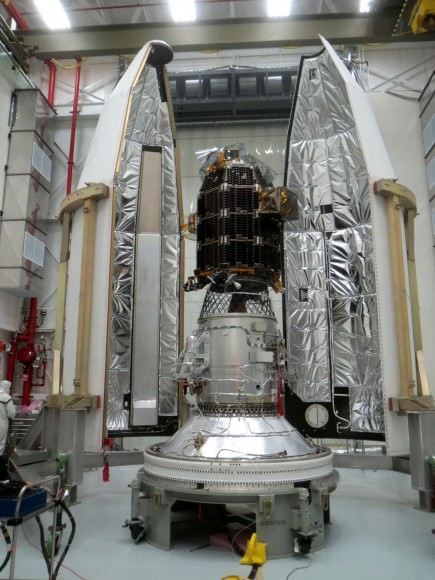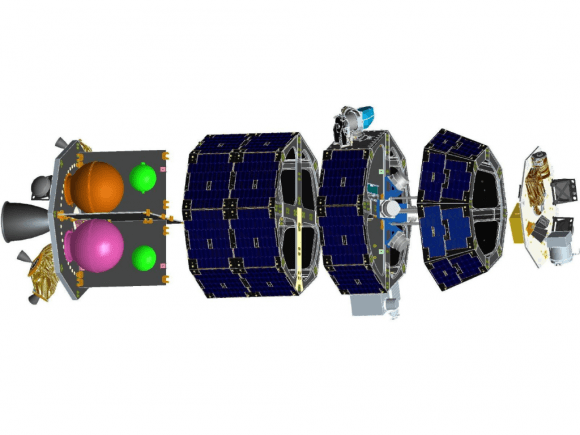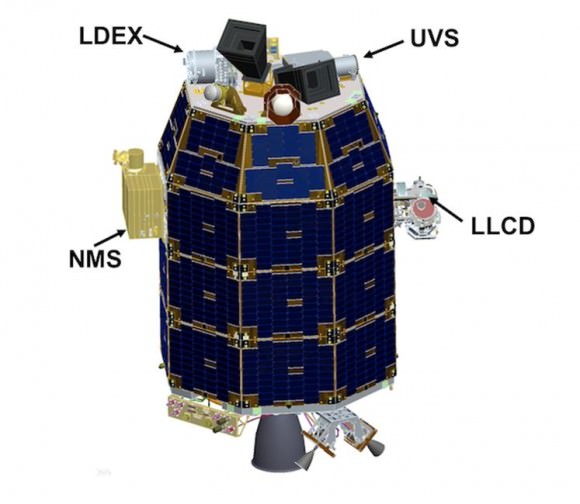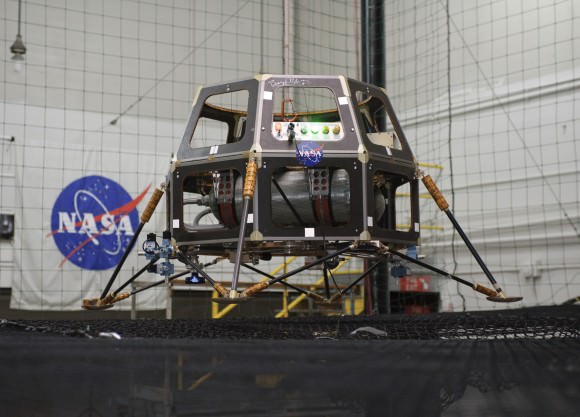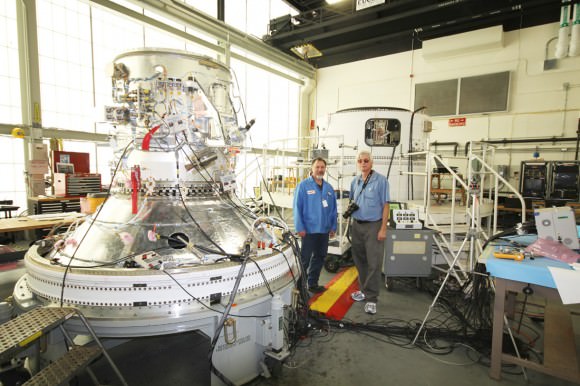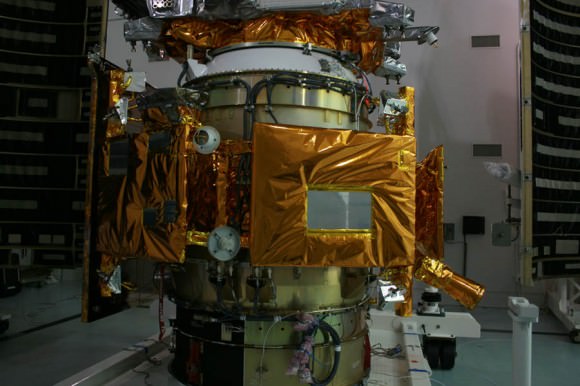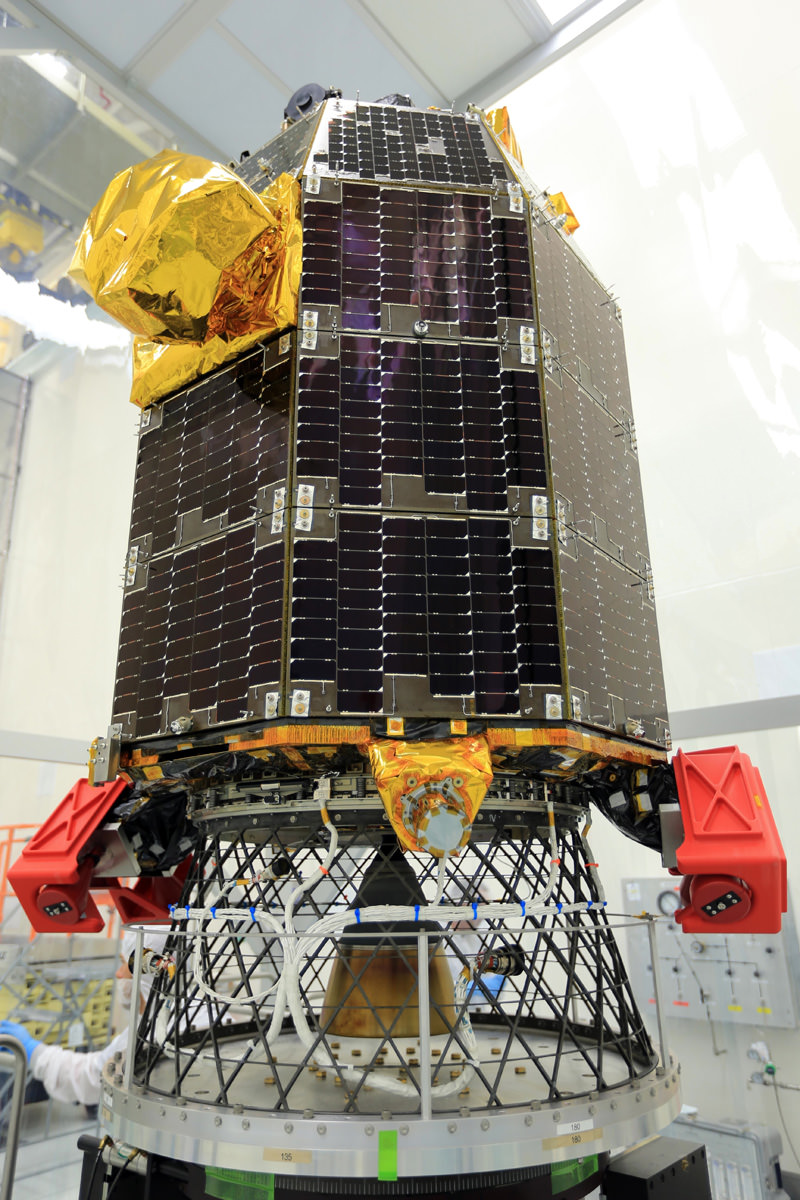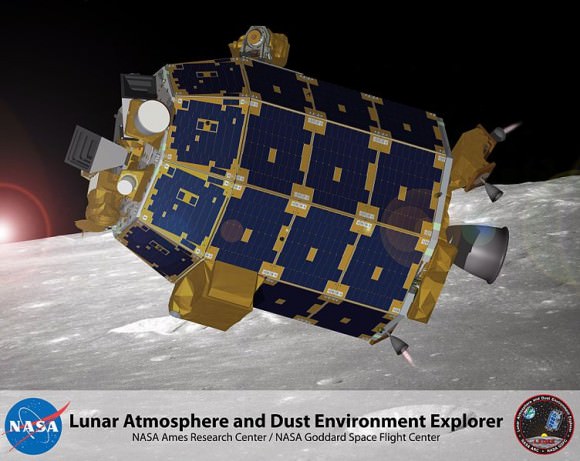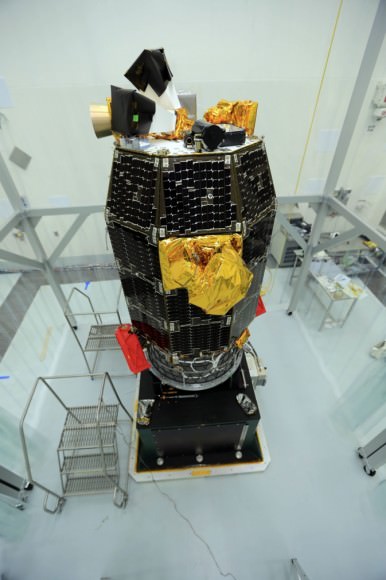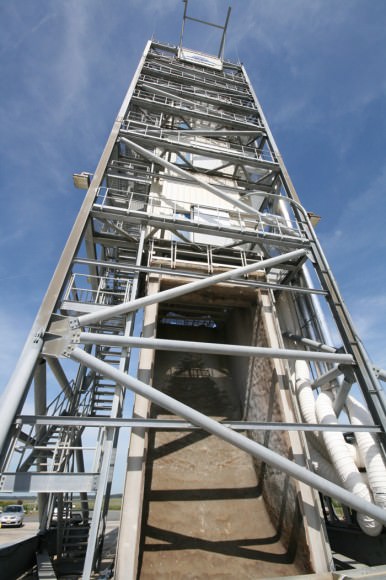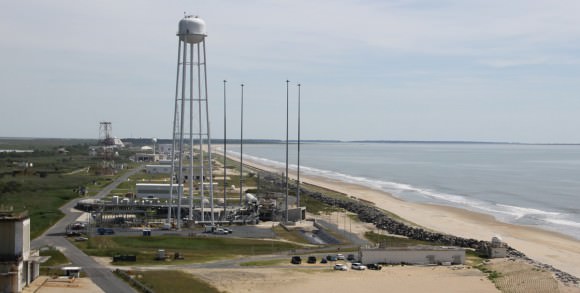NASA’s new LADEE spacecraft successfully entered lunar orbit, is operating beautifully and has begun shooting its radical laser communications experiment despite having to accomplish a series of absolutely critical do-or-die orbital insertion engine firings with a “skeleton crew ” – all this amidst the NASA and US government shutdown, NASA Ames Research Center Director Pete Worden told Universe Today in a LADEE mission exclusive.
During the two and a half week long NASA shutdown, engineers had to fire LADEE’s maneuvering thrusters three times over six days – first to brake into elliptical orbit about the Moon and then lower it significantly and safely into a circular commissioning orbit.
“All burns went super well,” Ames Center Director Worden told me exclusivly. And he is extremely proud of the entire team of “dedicated” professional men and women who made it possible during the shutdown.
“It says a lot about our people’s dedication and capability when a skeleton crew can get a new spacecraft into lunar orbit and fully commissioned in the face of a shutdown!” Worden said to Universe Today.
“I’m really happy that everyone’s back.”
After achieving orbit, a pair of additional engine burns reduced LADEE’s altitude and period into its initial commissioning orbit and teams began the month long activation and instrument checkout phase.
“We are at the commissioning orbit of 250 km,” said Worden.
And to top all that off, LADEE’s quartet of science instruments are checked out and the ground – breaking laser communications experiment that will bring about a quantum leap in transmitting space science data has already begun its work!
“All instruments are fully checked out with covers deployed.”
“We’ve begun the Lunar Laser Communications Demonstration (LLCD) tests and its working very well,” Worden explained.
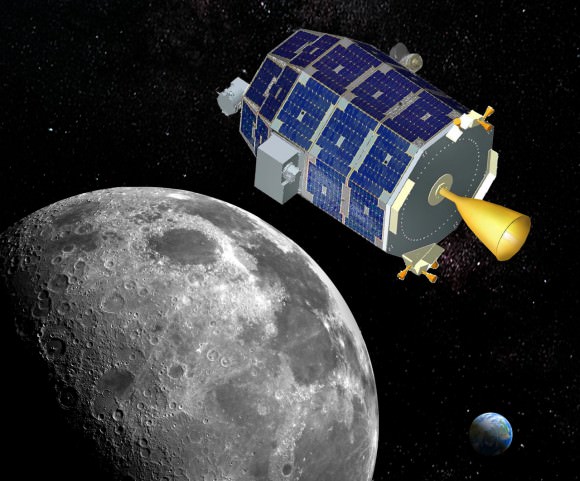
And that’s the whole point of the LADEE mission in the first place.
97% of NASA’s employees were furloughed during the utterly chaotic and wasteful partial shutdown of the US government that lasted from Oct. 1 to Oct. 17 and also temporarily threatened the upcoming launch of NASA’s next mission to Mars – the MAVEN orbiter.
However, orbital mechanics follows the natural laws of the Universe, continues unabated and waits for no one in Washington, D.C.
NASA’s Jupiter-bound Juno orbiter also flew by Earth amidst the DC shutdown showdown on Oct. 9 for a similarly critical do-or-die gravity assisted speed boost and trajectory targeting maneuver.
The stakes were extremely high for NASA’s Lunar Atmosphere and Dust Environment Explorer (LADEE) mission because the spacecraft was on course for the Moon and absolutely had to ignite its main engine on the Sunday morning of Oct. 6.
There were no second chances. If anything failed, LADEE would simply sail past the Moon with no hope of returning later.
So, mission controllers at NASA Ames commanded LADEE to ignite its main engine and enter lunar orbit on Oct. 6 following the spectacular Sept. 6 night launch from NASA’s Wallops Island spaceport in Virginia.
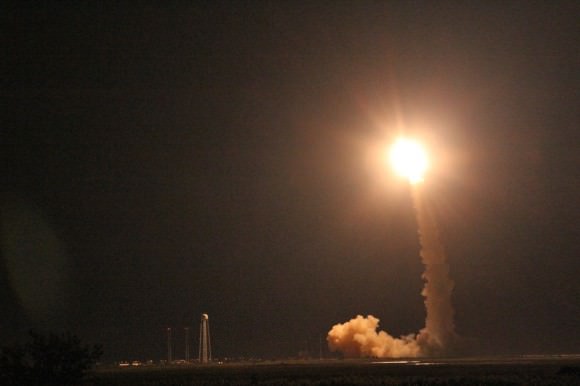
The approximately four minute long burn know as Lunar Orbit Insertion burn 1 (LOI-1) began with LADEE’s arrival at the Moon following three and a half long looping orbits of the Earth.
LOI-1 changed the spacecrafts velocity by 329.8 meters/sec so that the couch sized probe could be captured by the Moon’s gravity and be placed into a 24 hour polar elliptical orbit.
The LOI-2 maneuver on Oct. 9 put LADEE into a 4-hour elliptic lunar orbit. The third and final LOI-3 burn occurred on Oct. 12, and put the spacecraft into the 2-hour commissioning orbit (roughly 235 Km x 250 Km), according to a NASA statement.
The 844 pound (383 kg) robot explorer was assembled at NASA’s Ames Research Center, Moffett Field, Calif., and is a cooperative project with NASA Goddard Spaceflight Center in Maryland.
“LADEE is the first NASA mission with a dedicated laser communications experiment,” said Don Cornwell, mission manager for the Lunar Laser Communications Demonstration (LLCD), NASA’s Goddard Space Flight Center, Greenbelt, Md, during an interview with Universe Today at the LADEE launch.
“With the LLCD experiment, we’ll use laser communications to demonstrate at least six times more data rate from the moon than what we can do with a radio system with half the weight and 25 percent less power,” said Cornwell.
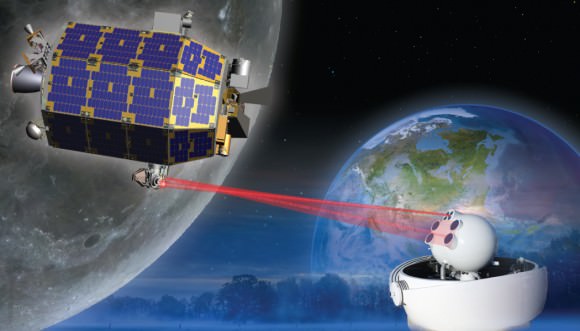
The LLCD will be operated for about 30 days during the time of the commissioning orbit period.
The purpose of LADEE is to collect data that will inform scientists in unprecedented detail about the ultra thin lunar atmosphere, environmental influences on lunar dust and conditions near the surface. In turn this will lead to a better understanding of other planetary bodies in our solar system and beyond.
The $280 million probe is built on a revolutionary ‘modular common spacecraft bus’, or body, that could dramatically cut the cost of exploring space and also be utilized on space probes to explore a wide variety of inviting targets in the solar system.
“LADEE is the first in a new class of interplanetary exploration missions,” NASA Ames Director Worden told Universe Today. “It will study the pristine moon to study significant questions.”
“This is probably our last best chance to study the pristine Moon before there is a lot of human activity there changing things.”
Stay tuned here for continuing LADEE news

